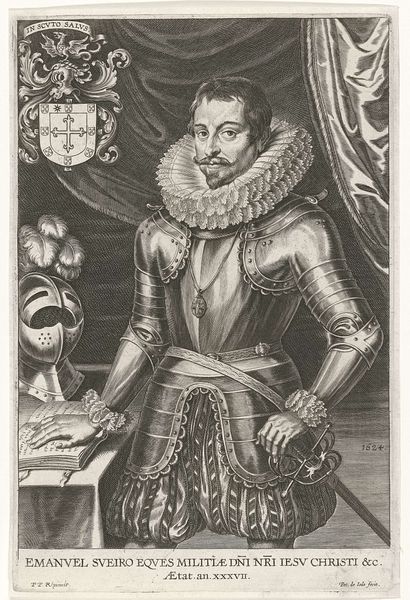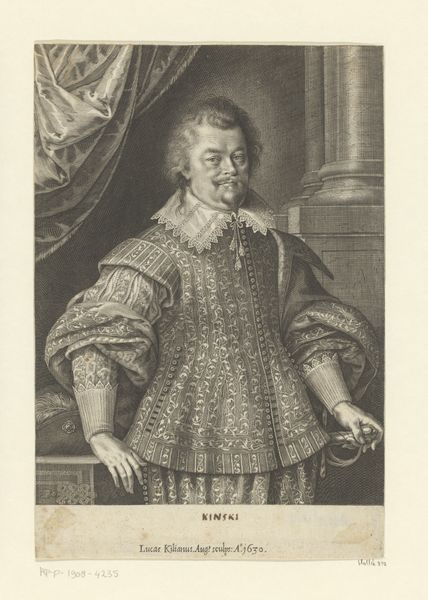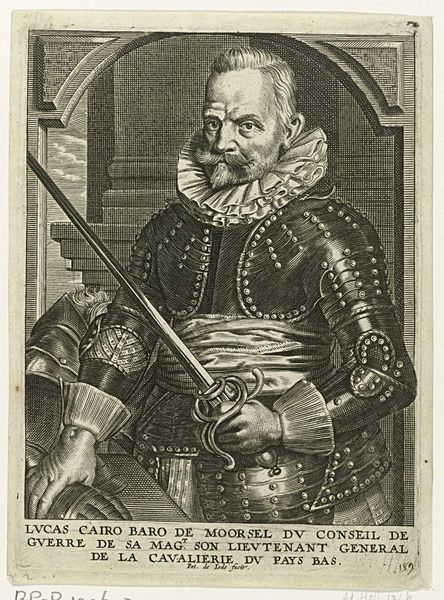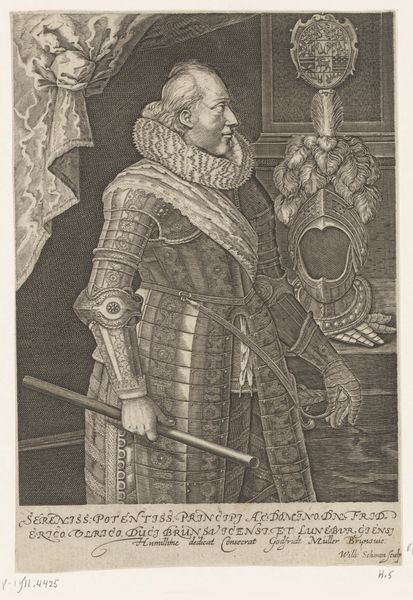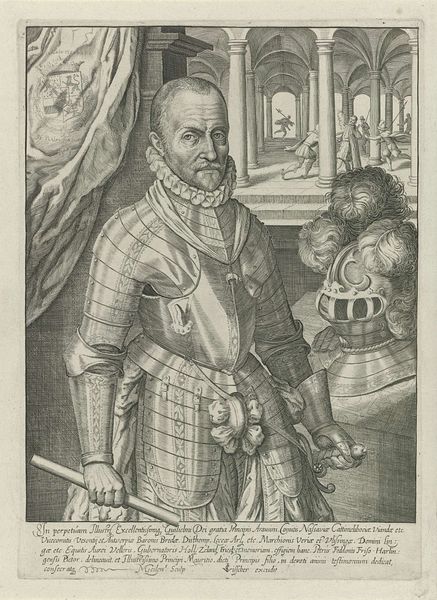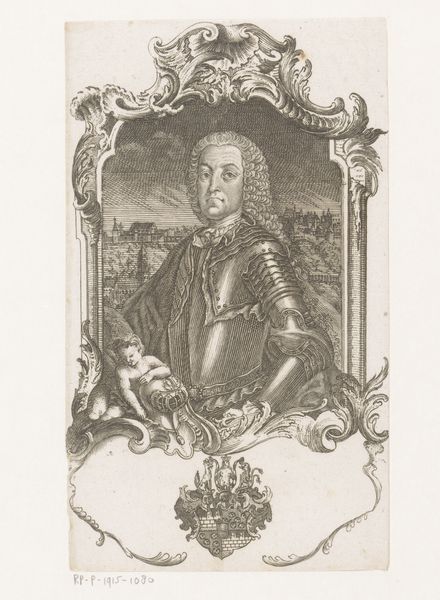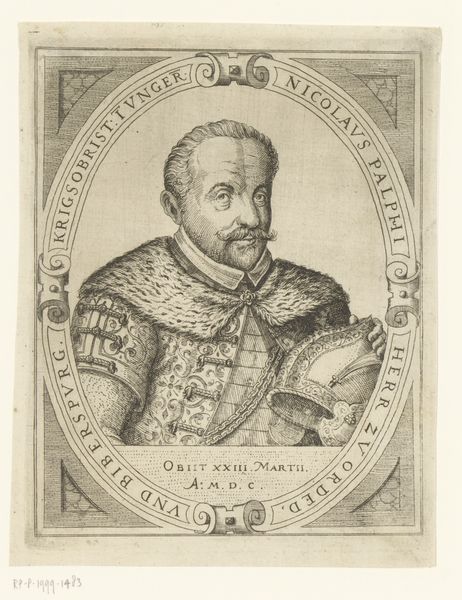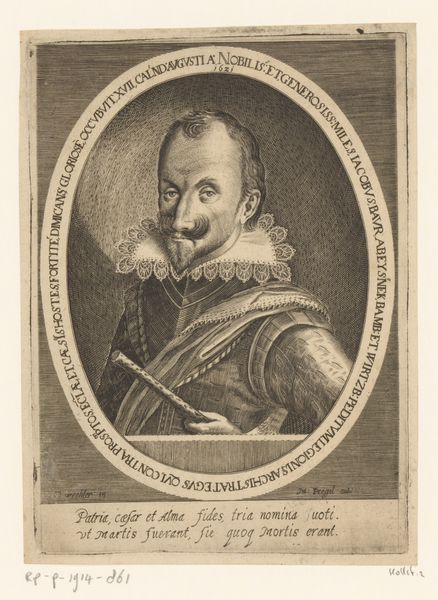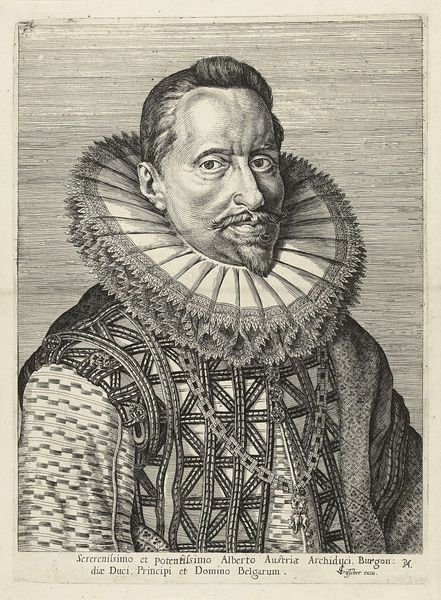
drawing, print, metal, engraving
#
portrait
#
drawing
#
baroque
# print
#
metal
#
old engraving style
#
traditional media
#
mannerism
#
engraving
Dimensions: height 238 mm, width 152 mm
Copyright: Rijks Museum: Open Domain
This print, made in 1630 by Lucas Kilian, depicts Johann Georg of Saxony in full armor. Note the prominent display of his coat of arms, a heraldic symbol asserting his lineage, power and status. Such emblems are not mere decorations; they are potent visual declarations, echoing the family crests emblazoned on medieval shields. Consider the evolution of the lion rampant, often found in heraldry. From ancient Assyrian reliefs symbolizing strength, to its adoption by European royalty, the lion has traversed centuries, each time accruing new layers of meaning. Similarly, the symbolic weight of armor—protection, authority, martial prowess—finds parallels in the ceremonial garb of ancient warriors and the uniforms of modern soldiers. These symbols tap into our collective memory, stirring subconscious associations of power and protection. The emotional resonance of such imagery persists, engaging viewers on a deep, almost primal level. This cyclical progression—from ancient roots to contemporary contexts—reveals the enduring power of symbols to evolve, resurface, and take on new meanings across time.
Comments
No comments
Be the first to comment and join the conversation on the ultimate creative platform.

